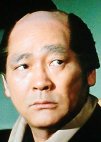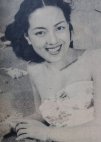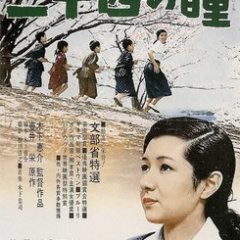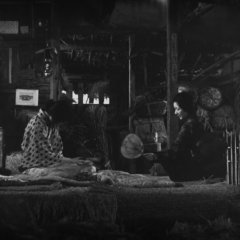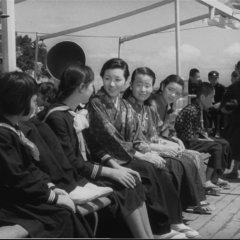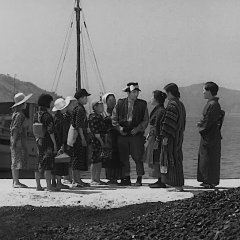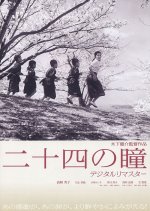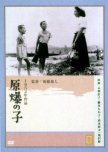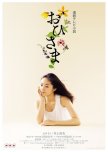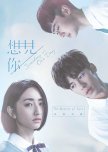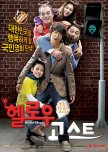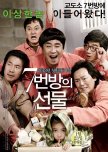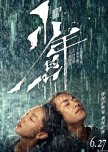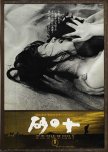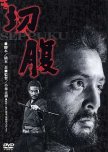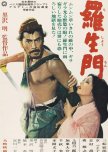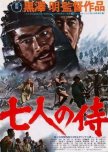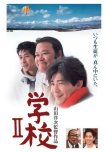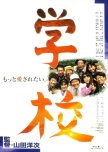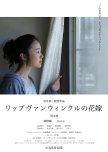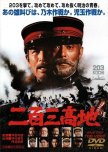The movie follows the career of a schoolteacher named Hisako Oishi in Shodoshima during the rise and fall of Japanese ultra-nationalism in the beginning of the Showa period. The narrative begins in 1928 with the teacher's first class of first grade students and follows her through 1946. ~~ Adapted from the novel "Nijushi no Hitomi" by Sakae Tsuboi. Edit Translation
- English
- magyar / magyar nyelv
- dansk
- Norsk
- Native Title: 二十四の瞳
- Also Known As: Nijushi no Hitomi ,
- Director: Kinoshita Keisuke
- Genres: Historical, Drama
Cast & Credits
- Takamine Hideko Main Role
- Takahara ToshioChiririn'yaSupport Role
- Tamura TakahiroOkadaSupport Role
- Igawa KunikoMatsueSupport Role
- Ryu ChishuOtoko SenseiSupport Role
- Urabe Kumeko[The teacher's wife]Support Role
Reviews

Of historical interest -- and also very moving. I cried.
The way "Twenty-four Eyes" is filmed, is period-typical for a movie, especially one that is not about action but tries to explore characters. I watched more than a few western films from the fourties and fifties, so I was already familiar with the style of acting and filming, as well as the sound quality (especially voices and singing have a special "ring" to them, which is hard to describe.) For people who are not used to this, the movie might feel strangely slow and static.With 2 hours and 36 minutes, the film is quite long, even for modern standards. There are three parts:
First, we meet the twelve children and her teacher in the first grade. For both the children and the teacher their roles at school are new and unfamiliar -- and while it might seem as if not much is happening, the freedom and serenity of this first hour is a good contrast to the following parts. After a time skip of five years, teacher and children meet again in the children's sixth grade, the last obligatory school grade back then -- we'll see how both the children's families and the growing nationalism (with it, the looming war) will shape their futures. And, lastly, vignettes of the following years of war and death, and how it impacts even that small Japanese island. There's also some time dedicated to the aftermath -- children, now young adults with their own kids, and the teacher reunite, look back to their shared past and then into the future.
I think for anyone who wants to watch this in the 21st century, it is important to be aware that the year that the film was shown
in cinemas -- 1954 -- is only nine years after the end of World War Two. So, these children (young adults in the later parts) could have been themselves, their children, their brothers, sisters, husbands and wives. I can imagine that the film was cathartic for the audience back then; it definitely must have had a stronger emotional impact than it could ever have for me.
Besides the emotional journey, and the reminder of how nationalism and senseless wars (and all wars are senseless) will destroy lives, for me the film also gave me a chance to see Japan as it was 70 to 90 years ago. We get to see two rural schools and a glimpse of teaching and learning; we see the houses in the fishing village; we hear people's thoughts on poverty, proper manners, women, family. I loved seeing how the style of clothing changed from 1928 to 1946.
(The film had the advantage that everything was very recent, so sets are probably authentic buildings and streets, and the people who made it could just remember how it was. No extra research needed.)
There are quite a few scenes that were very poignant, such as the teacher's despair that nationalist teachings had overtaken everything at school, or the scene after the war ended when her eldest son is not able to grasp that everything he believed was now supposed to be wrong.
One thing that I was a bit disappointing was that the songs's texts (the children sing quite often) were not translated in the subtitles. I think these were mostly Japanese folk and children's songs, and the texts probably underlined the emotions of the scenes -- but the international audience won't know them. It's not the fault of the film, but disappointeing nevertheless.
Overall, if you have the chance to watch it, do so!
Was this review helpful to you?

A wonderful adaptation of a tragic story
Twenty-four Eyes is one of the great Japanese classic movies. Based on a novel, the story is very popular in Japan and the 1954 movie adaptation might be the best work of director Keisuke Kinoshita. The great Hideko Takamine plays a teacher of a rural school on Shodoshima Island from the years before World War II until the end of the war.If you are interested into Japanase classic movies, then this one should be on the top of your list. It might start at a slow pace, but it definitely will drag you in. There are lots of memorable moments in it, like the "train" or the bicycle.
And also the other movies of Keisuke Kinoshita are worth to explore. Not all of his movies turned out great, but you should not miss 'She Was Like a Wild Chrysanthemum' despite its unusual presentation or the the somewhat horrifying tale in 'Legend of a Duel to the Death' (aka 'A Legend or was it?')
You might have watched 'Ikiru' from Akira Kurosawa. This one is in the same league.
BTW: I had to give a rating for the music, which does not make any sense for this kind of movie. I did not want to give any bad rating, so I simply gave 10/10, but please ignore this. :-)
Was this review helpful to you?



